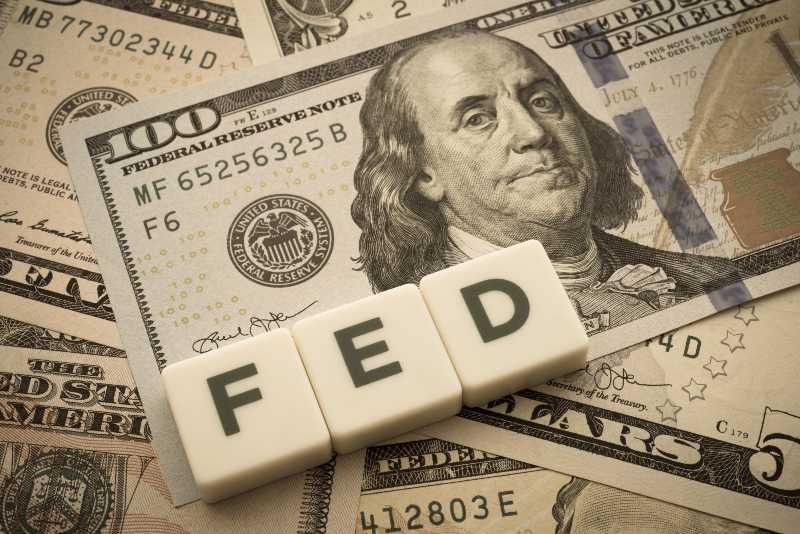Business
Federal Reserve Decides to Keep Interest Rates Unchanged Despite High Inflation

Federal Reserve officials chose to keep the central bank's benchmark interest rate despite inflation exceeding its goal for more than two years because the break would allow them to evaluate the effects of earlier hikes on the economy.
The Federal Reserve announced on Wednesday that it would maintain its benchmark interest rate at a range of 5% to 5.25 %, the level it set at its meeting in May and the highest since the Fed raised rates in the summer of 2007. The Fed also hinted that it anticipates raising rates at least twice more this year.
The Federal Open Market Committee announced the decision in a statement, saying:
“Holding the target range steady at this meeting allows the Committee to assess additional information and its implications for monetary policy. In determining the extent of additional policy firming that may be appropriate to return inflation to 2 percent over time, the Committee will take into account the cumulative tightening of monetary policy, the lags with which monetary policy affects economic activity and inflation, and economic and financial developments.”
With no FOMC members disagreeing, the decision was adopted without dissent. It was rumored that one or more regional Fed presidents would vote against keeping rates unchanged and instead favor rate increases.
The federal funds rate, which the Fed uses as an overnight interbank borrowing rate in an effort to carry out its statutory mandate to stabilize prices and increase employment, has not been raised by the Fed for the first time in 15 months.
The decision to hold interest rates unchanged on Tuesday came at a time when many Fed members had expressed worry that the labor market was extremely tight by almost all metrics and that inflation was still running well above the Fed's stated target rate of two percent. To give them a chance to assess the effects of previous rate hikes on the economy, Fed Chairman Jerome Powell and other members of the Fed board have stated in speeches and other public statements that the central bank would consider “pausing” or “skipping” a rate hike at the June meeting. This has frequently been followed by the notion that the Fed should make it clear that it is prepared to resume raising interest rates if inflation picks up steam.
The Fed's decision to maintain rates was generally anticipated, but markets and experts disagree on what the Fed will do next. Bond markets earlier this year reflected expectations that the Fed will start lowering rates soon after pausing after the previous rate hike. That anticipation has been largely dashed by hawkish remarks from Fed officials and stronger-than-expected economic statistics. The question at hand is whether the Fed would restart raising interest rates later this year or continue the pause through additional meetings.
More rate hikes might cause the economy to enter a recession and incite Powell's detractors on the left and right, many of whom believe the Fed has been overly aggressive in raising rates. On the other side, an extended pause or a decision to lower rates might spark inflation once again. The Fed is regarded by many as an unreliable economic advisor after hesitating for months under the false assumption that inflation would be temporary.
This week, economist Mohamed El-Erian penned an editorial for the Financial Times, writing: “Much has been written about why the Fed finds itself in this uncomfortable situation. The most commonly cited reason is that the Fed misjudged the inflation threat for most of 2021 and first quarter of 2022 before being forced into 10 successive rate hikes. As a result, the Fed has experienced a significant erosion of its public standing and policy credibility,”
The personal consumption expenditure price index for April increased by 4.4 percent when compared to the same month last year, which is more than double the Fed's target for inflation. Uncomfortably, that indicated a pick-up in inflation from the month prior, when it had increased by 4.2 percent from a year earlier. The PCE price index increased by 0.4 percent as compared to March, a significant increase over the 0.1 percent monthly gain that came before it.
The path of the economy, inflation, and interest rates have all been significantly reconsidered, according to a summary of Fed members' economic estimates provided on Wednesday. In the summary that was made public following the March meeting, the median estimate for GDP growth increased to 1% this year from 4%. Lower than the March forecast of 4.5 percent, a rise in the jobless rate to 4.1 percent is anticipated.
While core PCE inflation is predicted to increase from 3.6 percent to 3.9 percent, PCE inflation is predicted to be 3.2 percent, down from 3.3 percent.
The Fed funds rate is expected to increase the most drastically, from 5.1 percent to 5.6 percent by the end of the year.
Up Next:



